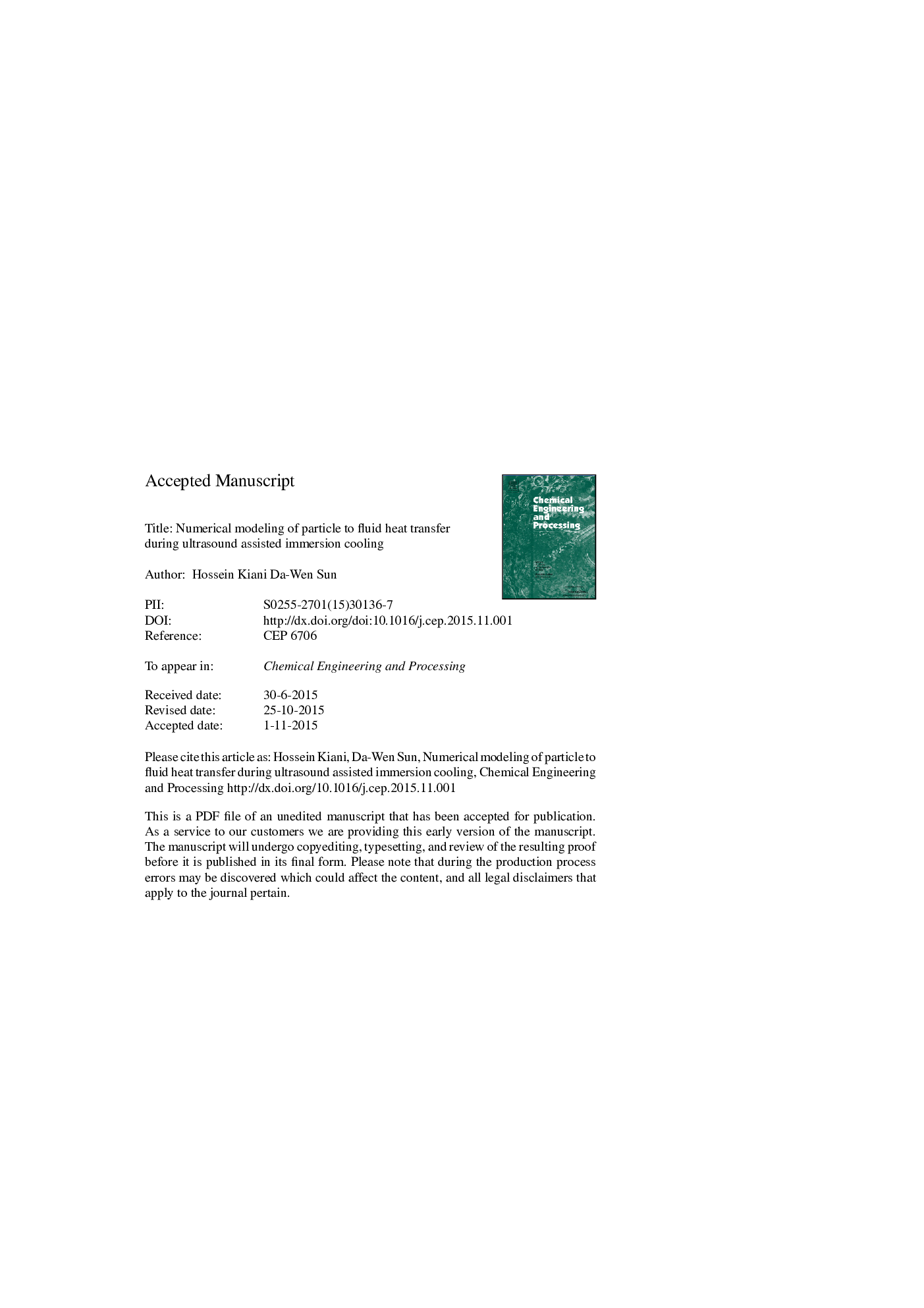| Article ID | Journal | Published Year | Pages | File Type |
|---|---|---|---|---|
| 7089744 | Chemical Engineering and Processing: Process Intensification | 2016 | 29 Pages |
Abstract
Convective heat transfer between a sphere and the surrounding medium and conductive heat transfer within the sphere were numerically modeled at the presence or absence of ultrasound. Different Nusselt (Nu) number correlations were evaluated and ultrasound assisted cooling was simulated for different intensities (190-2800 W mâ2), cooling medium temperatures (â5-â20 °C) and materials (copper and potato). The simulations were compared with experimental data. Both simulations and experimental data revealed that the particle to fluid convective heat transfer rate could be enhanced significantly by the aid of ultrasound irradiation. The results revealed that the selection of an appropriate Nu correlation was critical. With the chosen Nu correlation, the numerical model simulated the experimental data accurately. Ultrasound intensity was also incorporated into the Nu correlation while considering the ultrasonic heat generation in the heat transfer equation, and the simulation profiles matched to experimental profiles very well. The prominent advantage of the model was its ability to estimate the convective heat transfer coefficient at different temperatures. The results of this study are useful in different food and chemical processes involving heat transfer such freezing, chilling, crystallization and heat preservation.
Related Topics
Physical Sciences and Engineering
Chemical Engineering
Process Chemistry and Technology
Authors
Hossein Kiani, Da-Wen Sun,
